Once you start raising caterpillars and butterflies, you’ll want to start collecting them all.
In this post I share about raising spicebush swallowtail caterpillars from egg to butterfly. This unique-looking caterpillar turns into a really beautiful spicebush swallowtail butterfly!
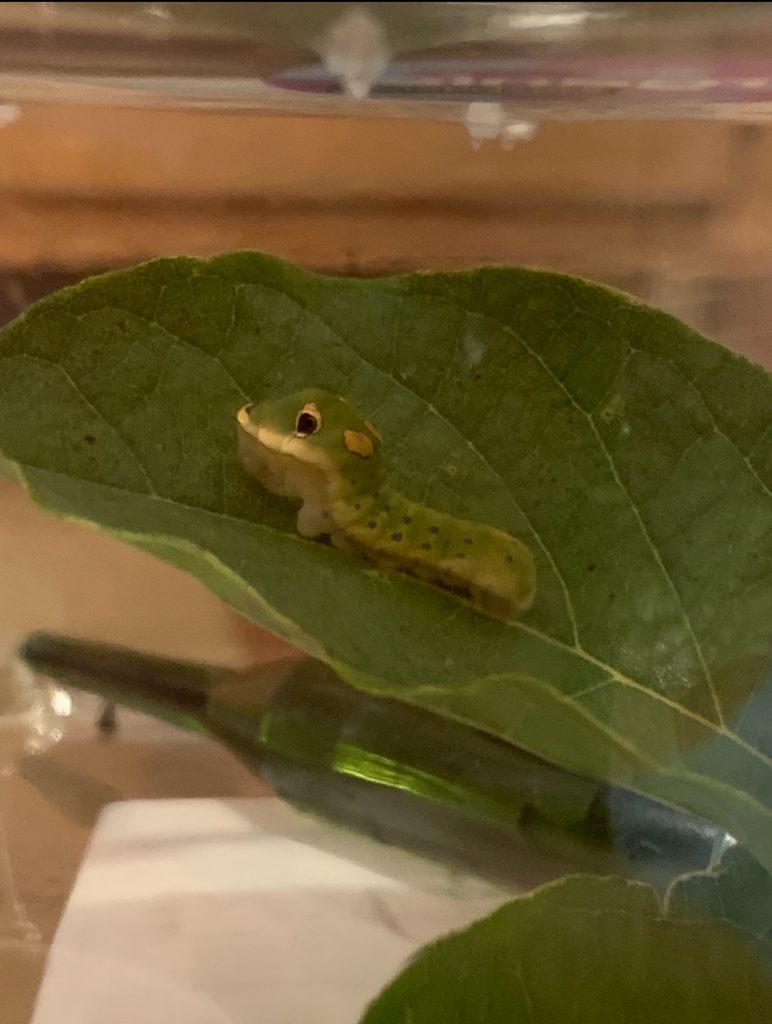
Raising caterpillars is actually quite easy – your job is to provide a clean living environment full of their favorite food so they can grow free from the predators in the wild.
And then release them back into the wild to produce more eggs, caterpillars and butterflies.
However, each species of butterfly is a little different. Understanding their unique quirks can demystify some of the puzzling behavior you may observe from your caterpillars.
The spicebush swallowtail butterfly, or Papilio troilus Linnaeus, is one of hundreds of species of swallowtail butterflies. There are only around 31 species found in North America.
The spicebush swallowtail butterfly is known for its unique blue-green coloring and is most commonly found in the eastern half of the United States.
Life cycle of a spicebush swallowtail butterfly
Understanding the life cycle of each butterfly is the first step to learning how to care for them. There are four stages in the life cycle of a butterfly: egg, caterpillar (larvae), chrysalis (pupa) and butterfly.
1. First, a female butterfly lays an egg on the host plant for that specific species. The spicebush swallowtail is most commonly found in spicebush plants. (We’ll cover their other host plants later in this post.)
2. Within 4 to 10 days of being laid, the caterpillar will hatch from the egg, typically eat the shell of its egg, and then begin eating its host plant.
3. A caterpillar will shed its skin 4 times, each time entering a new growth phase called an instar.
A recently hatched caterpillar is in its first instar, and then after it sheds its skin for the first time enters its second instar and so on.
The spicebush swallowtail caterpillar will continue to eat and grow for 3-4 weeks until it sheds its skin a fifth and final time to pupate into its chrysalis.
Before shedding its skin a final time, the caterpillar will search for the perfect spot. It often wanders away from its food to create a silk pad to attach itself to its surrounding.
Then it builds a silk thread called a saddle to hang in an upside down J. After hanging this way for 12-24 hours, it will pupate and enter the pupa stage.
4. The caterpillar will remain in its chrysalis for 10-20 days before eclosing as a butterfly.
It will emerge from the chrysalis with wet, wrinkled wings that will need to dry out for a couple of hours before being released.
During this time, it expands its wings by pumping fluid from its abdomen. You may notice that the fresh butterfly’s abdomen is larger when it first ecloses and then gets smaller as its wings expand.
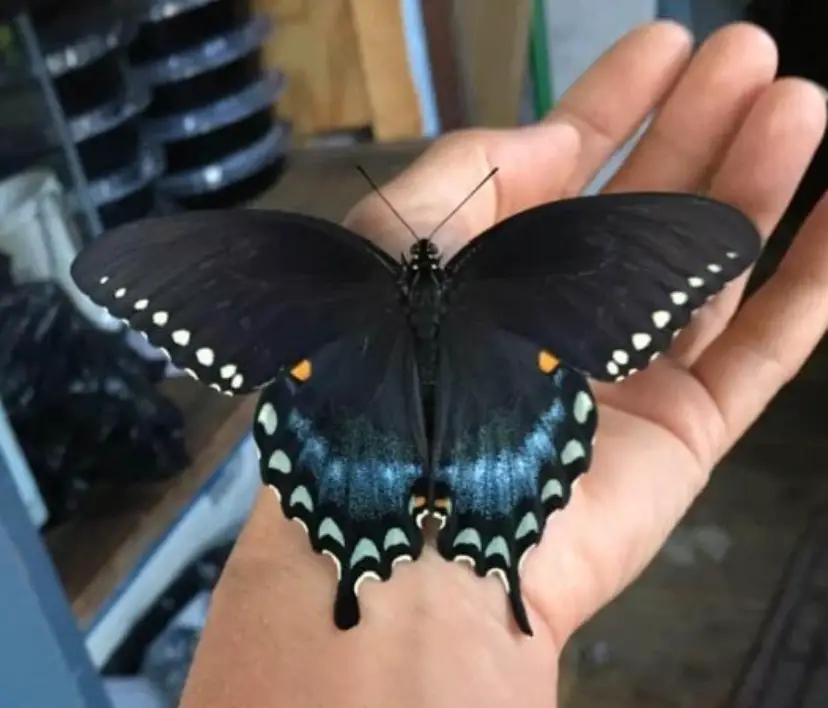
What do spicebush swallowtail caterpillars eat?
As you might have determined by the name, spicebush swallowtail caterpillars can be found on spicebush plants.
You may also find them on tulip trees, sassafras, camphor trees, redbay and swampbay.
How to find spicebush swallowtails
The easiest way to find a spicebush swallowtail caterpillar is to search the leaves of its host plant.
Raising caterpillars inside is impressive to watch, but it’s also great for waning butterfly populations. Caterpillars have many predators and have a much lower survival rate outside in the elements than when raised inside.
The best time to find a caterpillar is in the egg stage.
Caterpillars are sometimes infected with disease or parasites early on in their lifecycles, so you have a greater chance of raising a healthy butterfly from the egg stage.
Female spicebush swallowtails most commonly lay single eggs on the top of the leaves. However, you may also find them on the bottom of the leaf.
(Butterflies and caterpillars do what they want. We can make our best guesses about their behavior, but they might not listen.)
Eggs are white/yellowish and sphere shaped until the caterpillars are getting ready to hatch, at which point they will appear darker as the egg turns clear and you can actually see the caterpillar inside.
What does a spicebush caterpillar look like?
Early instar caterpillars are darker in color, resembling bird droppings.
As they grow they turn green with two snakelike eye designs on their backs. They may look menacing, but they are harmless.
I will work on adding some more detailed photos of the different stages, but unfortunately, I will likely have to wait until next summer for another opportunity.
You may also find them folded in a spicebush leaf as they like to build a nest and wrap the edge of the leaf around them for protection. They use leaves to protect themselves during the day and feed more at night.
They typically turn yellow or orange right before finding a spot to pupate into their chrysalis.


How to attract spicebush swallowtail butterflies
In order to collect eggs and caterpillars, you first need to attract the adult butterflies that will eventually lay eggs.
The easiest way to do this is to plant their host plants along with nectar plants so the butterflies will have everything they need in one spot!
This is our butterfly garden that currently has host plants for monarchs and black swallowtails, and next year we’ll add pawpaw trees for zebra swallowtails and a spicebush for spicebush swallowtails.

Conveniently, some of the best nectar plants are host plants for other butterflies, like milkweed which is the host plant for monarch butterflies.
It is one of the spicebush swallowtails favorite nectar plants. Other fan favorites include zinnias, lantana, cone flowers, phlox, black-eyed susan and many more.
Go a step further by researching native plants in your zone to create a native butterfly haven. Great for butterflies and the environment!
My butterfly garden tends to be a bit more messy and whimsical, but you can create yours to be as wild or prim and proper as you like. If you don’t have host plants in your garden, you can always go walk a wooded trail near a creek where they naturally grow. We’ve had good luck finding some of our favorite host plants on walking trails.
Even if you don’t have space to plant a large garden, you can create a container pollinator garden.
Many host plants thrive in a container, where they may be annuals instead of perennials. This is a great solution if you don’t have the space to build a large garden.
Don’t use pesticides or insecticides on your butterfly garden
Be sure not to treat your garden with anything that would kill insects, or you won’t find any surviving caterpillars in your garden.
We sprayed our yard for mosquitos one summer and butterflies still laid eggs, but they died within the first day of hatching. I definitely felt like a terrible caterpillar mom.
How to raise spicebush swallowtail caterpillars inside
There are a few tips that will make keeping your caterpillars inside a breeze. Here are some things you may want to purchase to take the best care of your new pets.
- Tupperware containers are easiest for when they are little.
- Butterfly enclosures are great for larger caterpillars so they have a perfect place to hang before pupating and plenty of room to dry their wet wings after eclosing.

When caterpillars are young, we typically keep them in tupperware.
They are easier to keep track of and to keep clean than the larger pop up butterfly enclosures.
Caterpillars poop A LOT so it’s important to keep their frass (the technical name) cleaned out.
When the caterpillars are small, you can probably get by with cleaning the containers daily, but as they grow, you may need to clean them twice a day.
You can keep several caterpillars in the same container. Just keep an eye on them from time to time. If they seem crowded, divide them up a bit.
You want to make sure you have enough food in each container to get the caterpillars through the day. They may eat more than you expect.
When the caterpillars reach the third or fourth instar (by the second week usually), it’s safe to transfer them to a popup butterfly enclosure.
This allows them to find a spot to pupate when they’re ready and eclose in a space ample enough to dry out their wings. You can line the bottom of the enclosure with paper towels to make clean-up easier.
How to feed spicebush swallowtail caterpillars inside
One way to keep a steady supply of leaves in the enclosure is to place an entire potted spicebush plant inside if you have one small enough.
Or cut an entire branch and place it in a cup of water with a lid or saran wrap covering the opening. You can place the branch through the straw opening in the lid. As long as your caterpillars aren’t itty bitty, they shouldn’t end up in the water.
If that doesn’t work for you, just bring in fresh leaves every day. Gently rinse them in your sink and dry off any excess moisture before giving them to your caterpillars.
You’ll have to replace them much more often than leaves on a stem, but your caterpillars will be happy either way.
How to release spicebush swallowtail butterflies
After you’ve patiently (and maybe anxiously – the suspense!) waited for your caterpillar to make it through the life cycle, it’s exciting to finally see the fruits of your labor with a freshly eclosed butterfly.
When it’s almost time, the chrysalis appears darker as it actually begins to turn a transparent color. Eventually, you’ll be able to see the pattern of the wings showing through. That’s how you know! It’s hard to catch them eclosing, but amazing to see if you do catch it.
If your butterfly does not eclose after a few weeks, it may still be alive but has decided to overwinter in its chrysalis.
This happens more frequently toward the end of summer when the weather begins to drop. The chrysalis will stay green (or the original color it pupated to) and firm—the signs of a healthy chrysalis.
You can actually place your chrysalis in the refrigerator to mimic the winter season and bring it back out in the spring as the weather warms back up. It still may take a few weeks to eclose, so patience is your friend.
Occasionally a pupa does die in the chrysalis stage. Casualties are a hazard of butterfly raising, so don’t be too hard on yourself.
Remember that its chances of survival outside were much, much lower. The chrysalis will turn a brown color (not as dark as when the butterfly is getting ready to emerge) and will eventually get mushy. You’ll be able to tell the difference when the time comes.
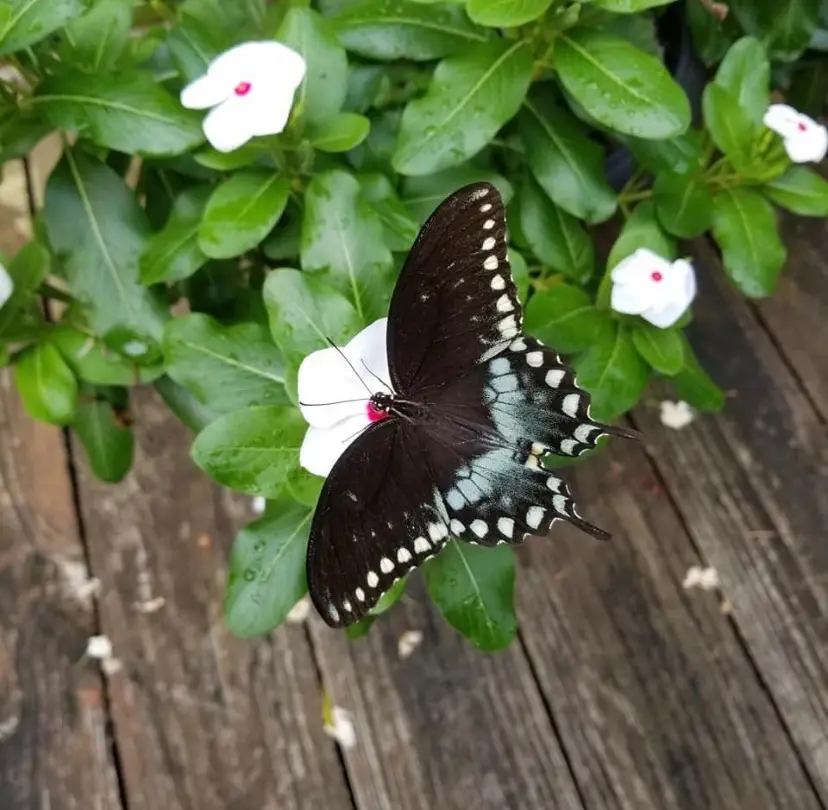
After your butterfly ecloses, it will need a few hours to dry out its wings.
Don’t mess with the butterfly or the enclosure during this time. A fall can permanently damage the wings if they are still wet and the butterfly won’t be able to fly.
After 2-3 hours, when your butterfly moves around the enclosure on its own, you can release it back into the wild and keep your fingers crossed that it brings you more eggs soon! This is our favorite part, one my kids have really enjoyed the last few years!
Have you found or raised a spicebush swallowtail? Leave a comment and tell me about your butterfly experiences!

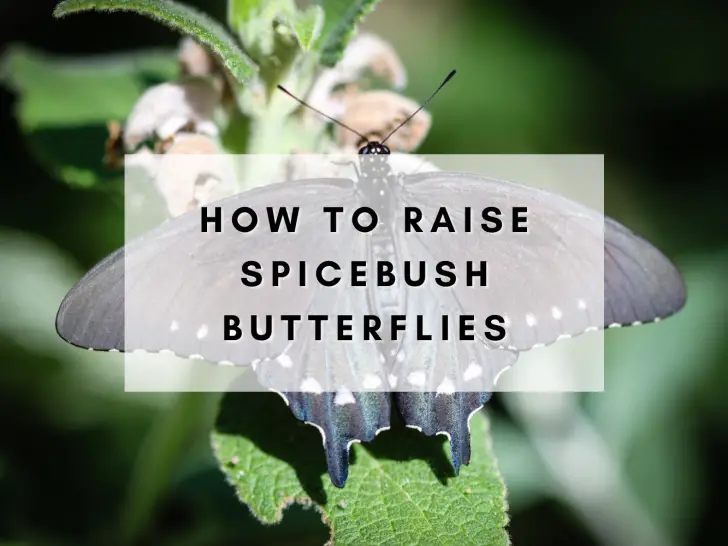
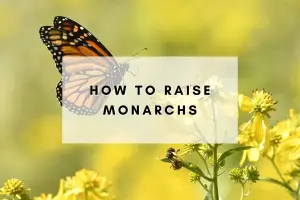
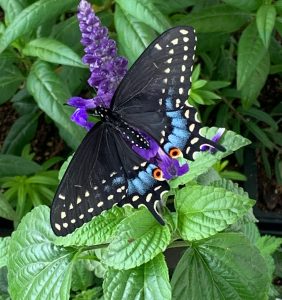

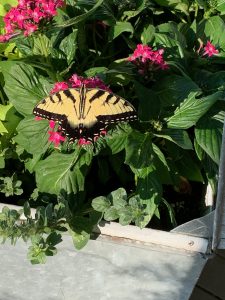
Joanne Baker-Oakes
Friday 28th of July 2023
We live in Mountain City Tennessee and this year have been raising the Spicebush Swallowtail Today the 5th eclosed and waiting another HR before releasing. My question is I believe this one is female- the other 4 were definitely male. This one seems different. Is there anyway I can send a photo?? Much Appreciated
Kim Smocm
Friday 2nd of September 2022
Love all this info!! You should do this for a living!
kala@rootedwingsco.com
Saturday 3rd of September 2022
Haha! Working on it :)